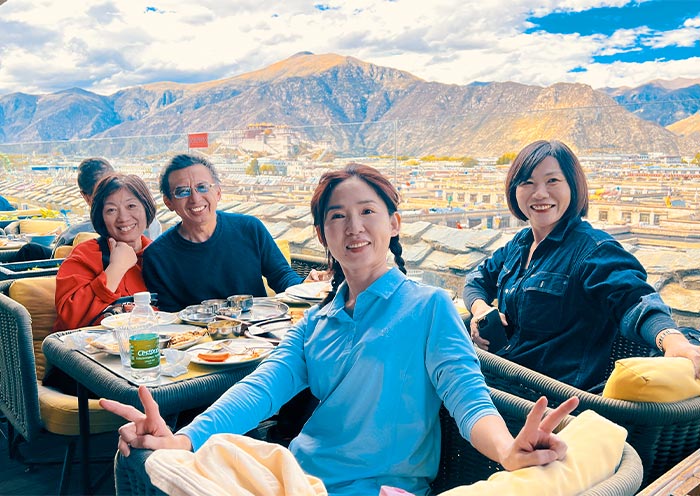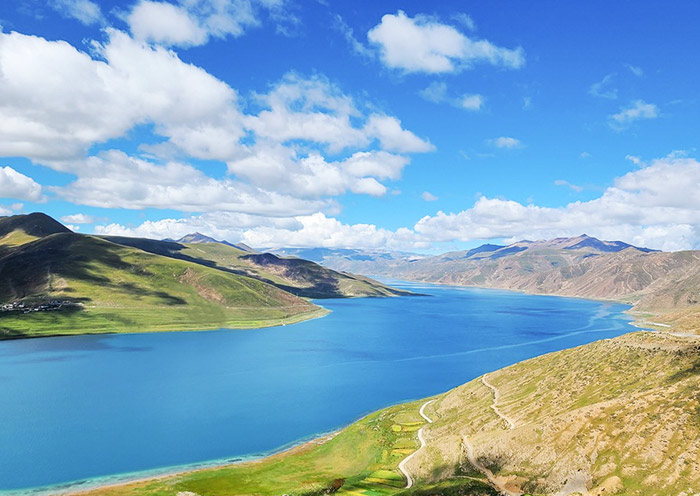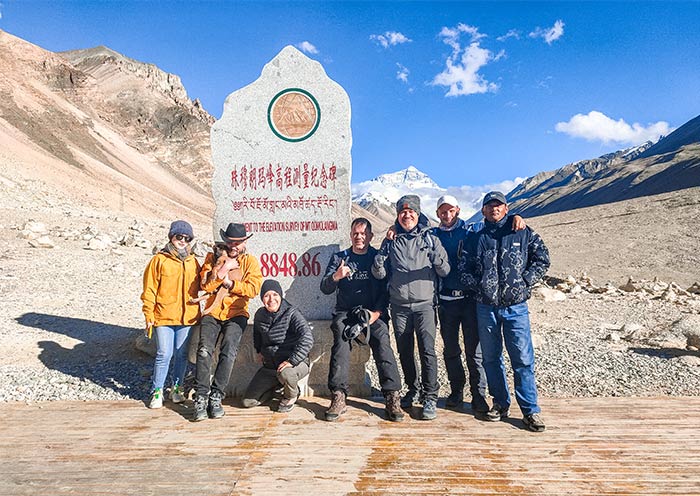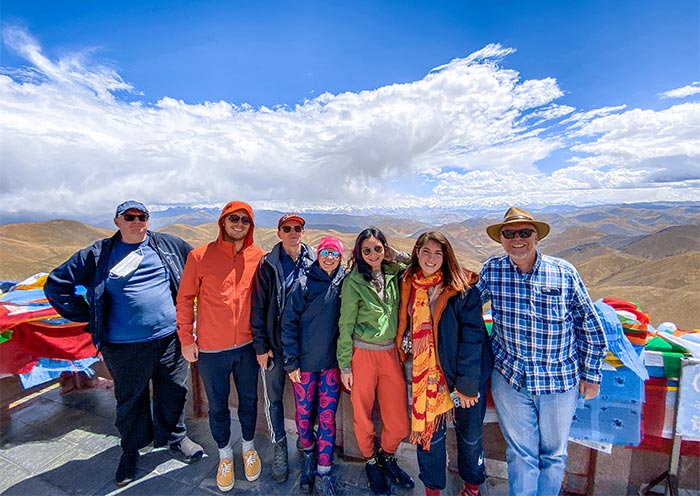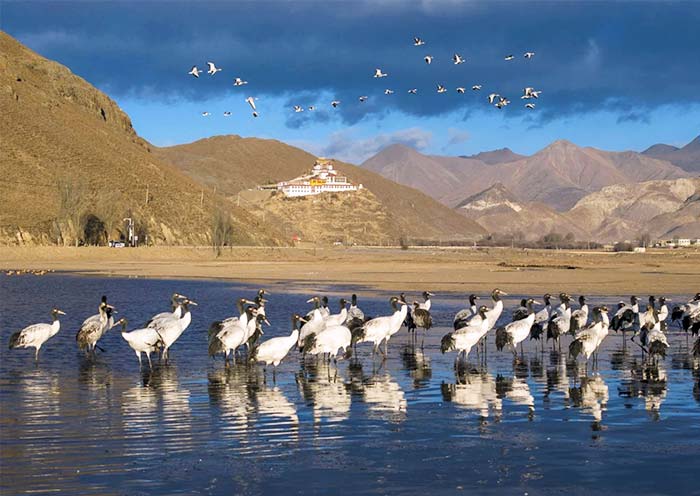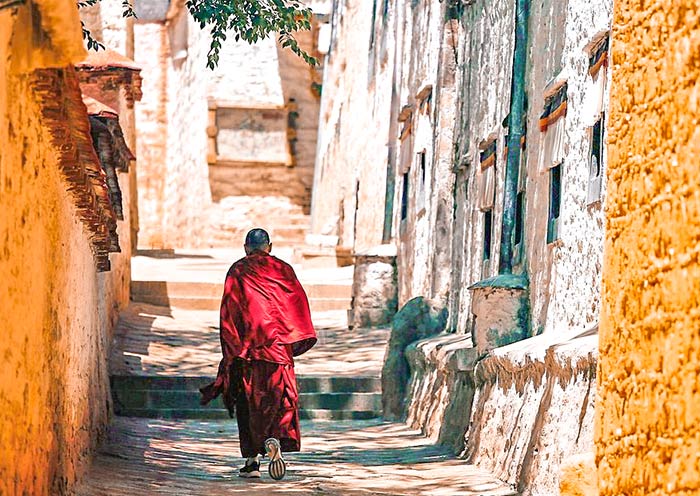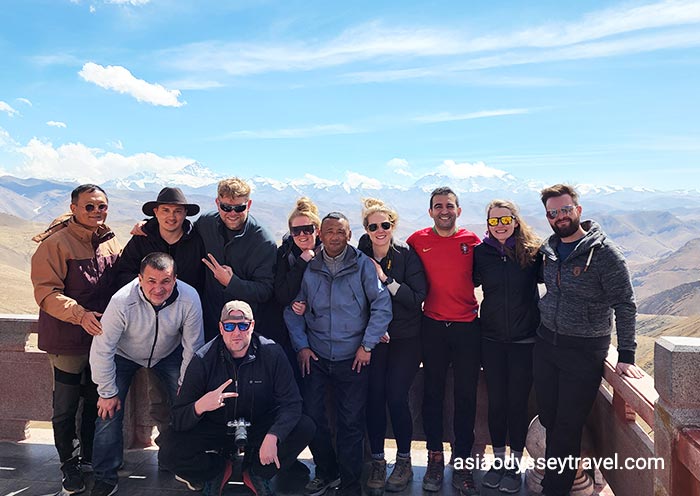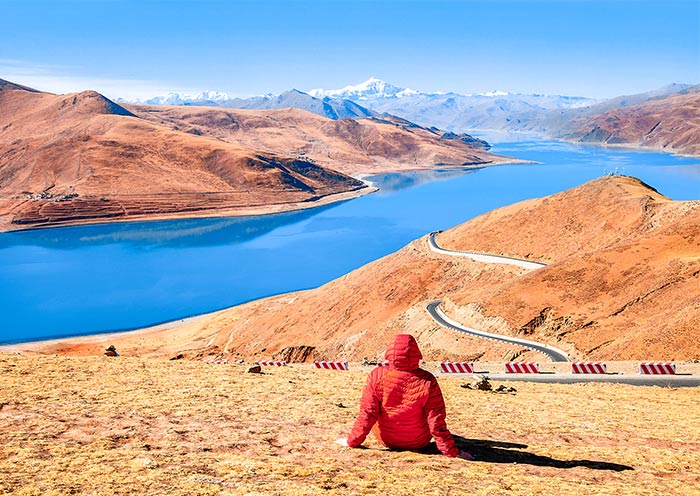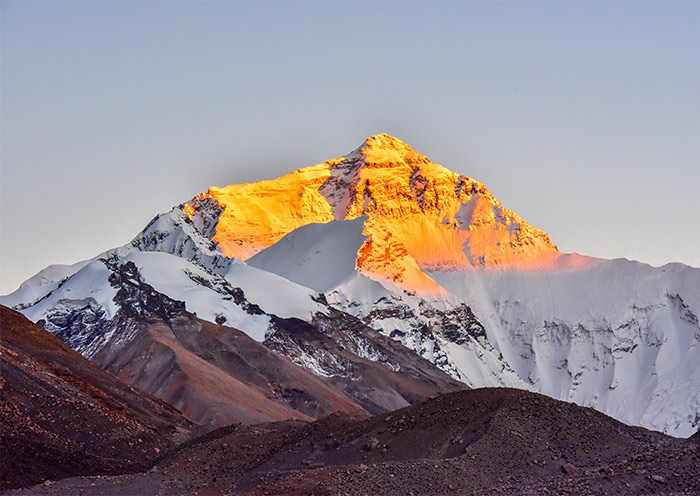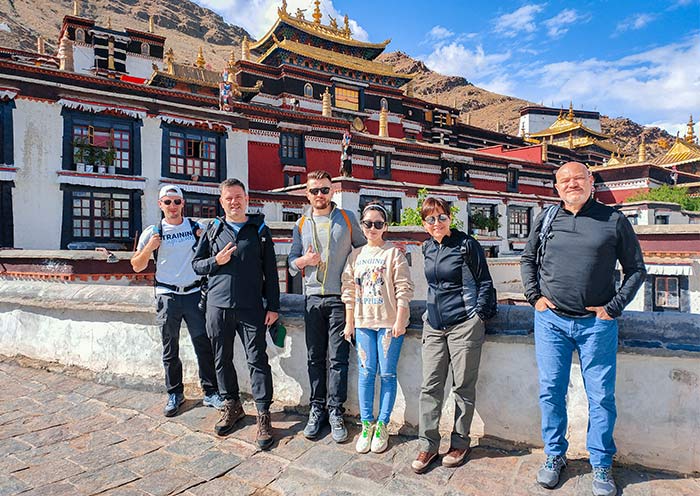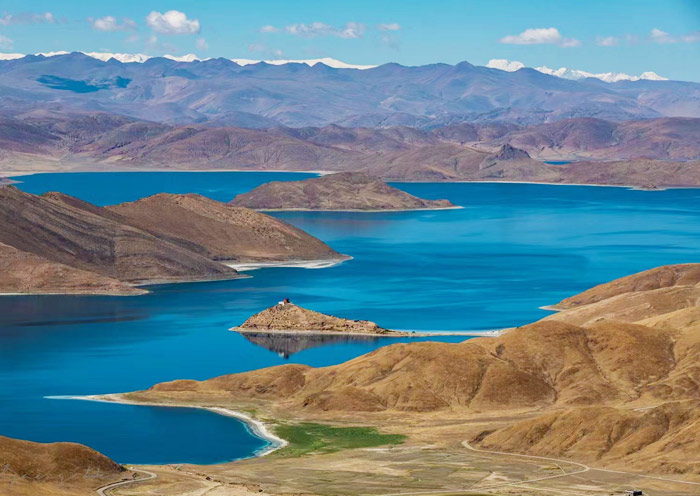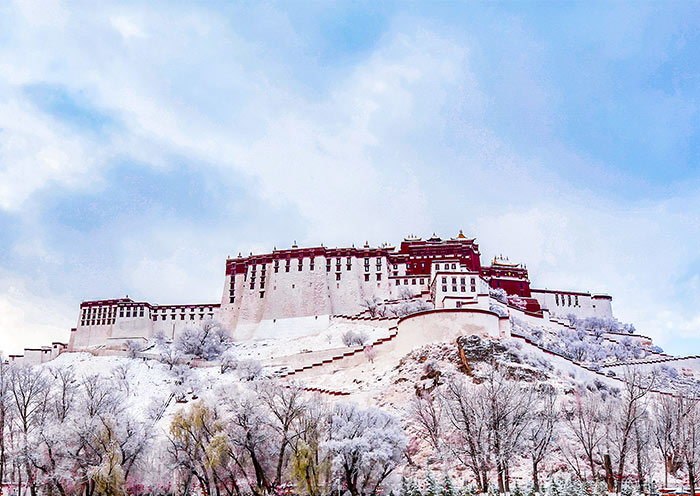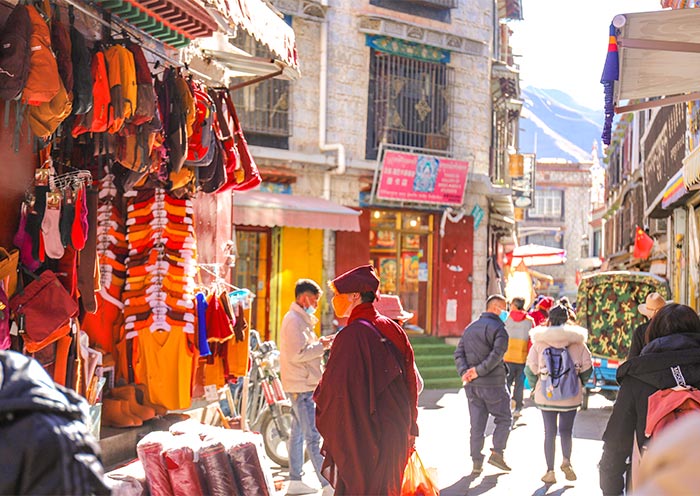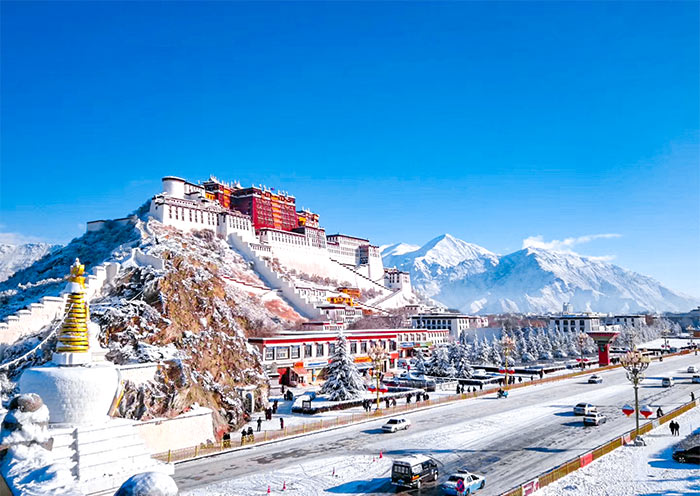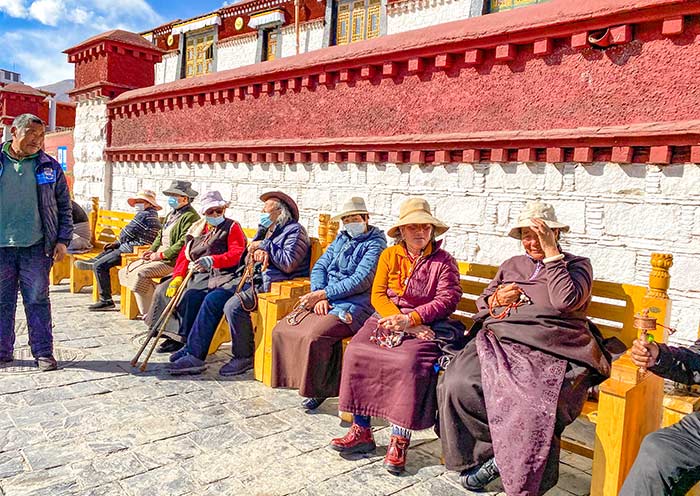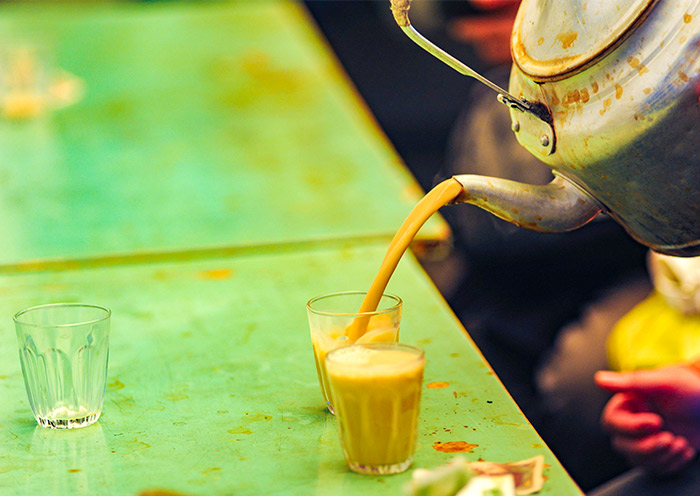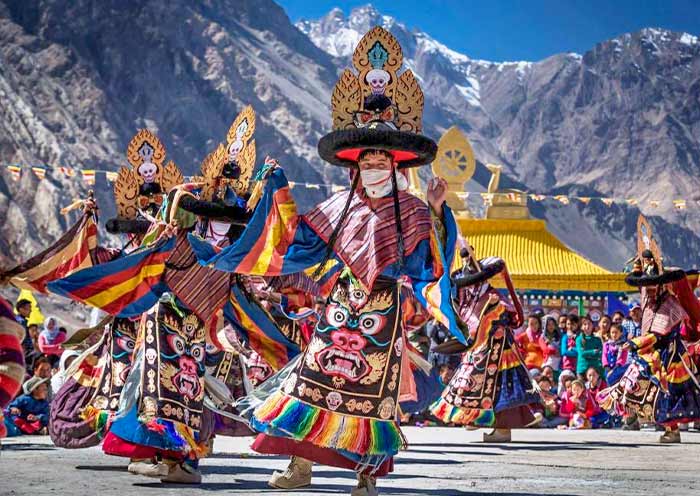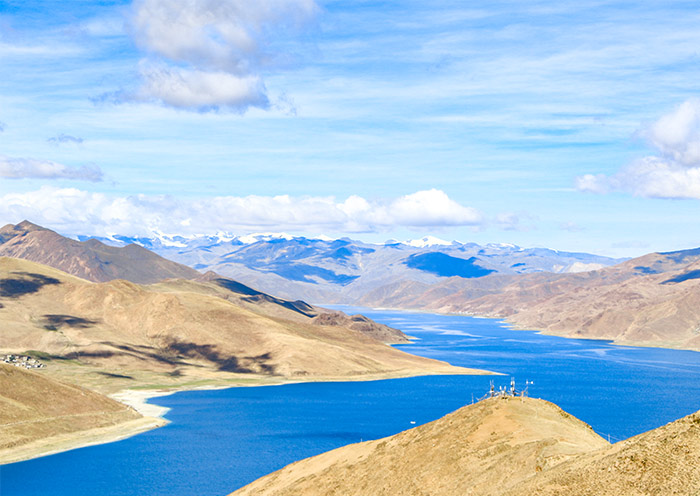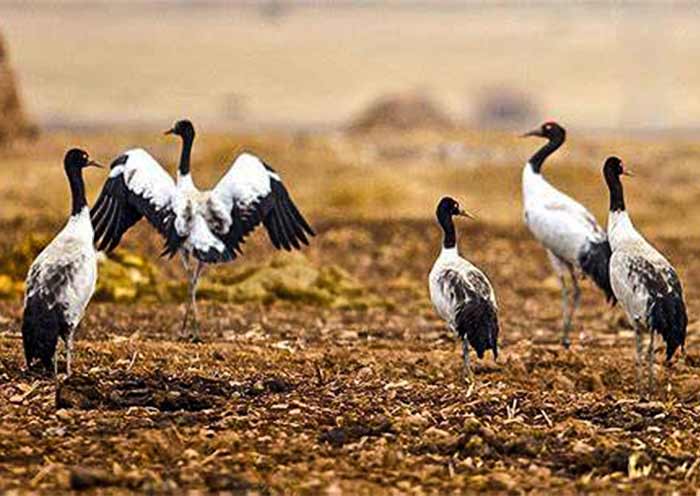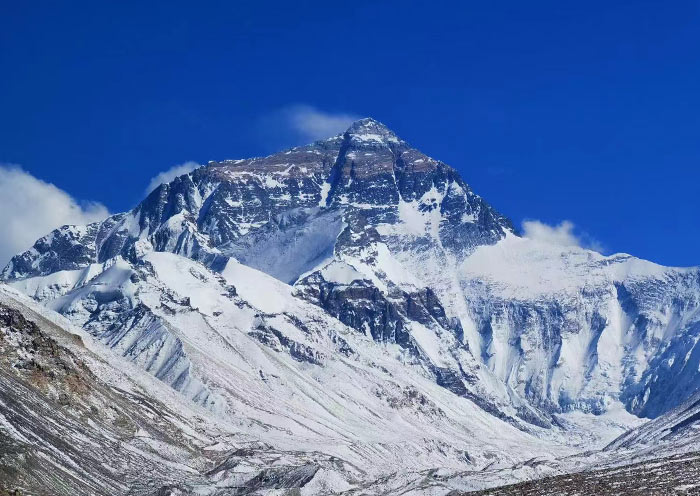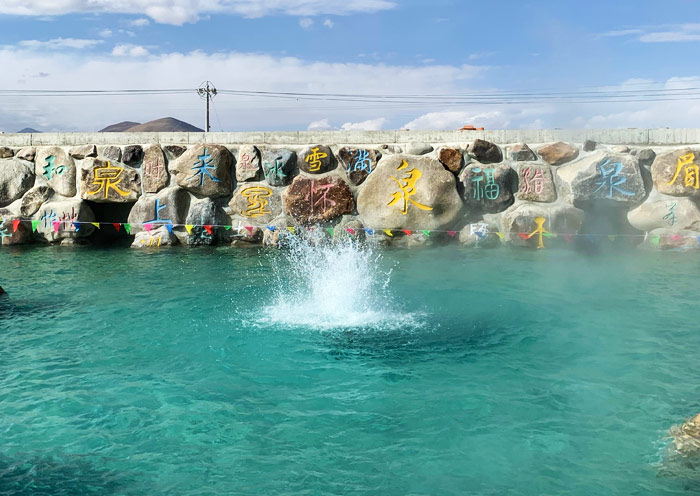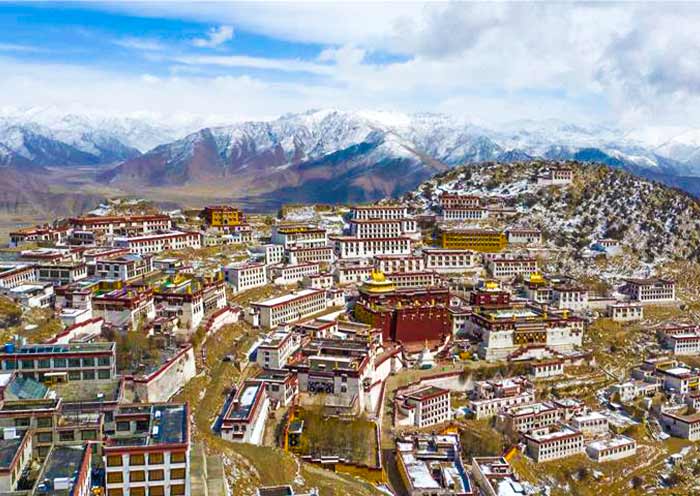Tour name: Line B2, 8 days Lhasa-Yamdroktso-Shigaste-Mt.Everest tour.
Key people: Bob (local Tibetan tour guide), Catherine Wang (travel consultant), Mr. Yu. Jian (driver).
This tour was sublime, a truly once-in-a-lifetime opportunity! From the very start, I was met with grace and incredible kindness. The driver assigned to me by the company was Susan and greeted me with a smile on her face, as well as the traditional Tibetan scarf she delicately placed around my neck. She then kindly offered to take some photos of me outside of the airport and offered me some water as we drove to the first accommodation in Lhasa. She then sent me a few locations within the city to explore, for shopping and food and shared her experience of living in the region for over a decade.
The following day we met our tour guide Bob, who to date has been my favourite tour guide. He was nothing short of incredible. Not only did he translate everything from Tibetan to Mandarin and English, making the tour accessible to all of us, but went above and beyond for all of us. Whether it was taking extra photos from awkward angles as the photographer to answering our follow-up questions or even giving us his own recommendations i.e. where to rent the traditional Tibetan clothes or shop for souvenirs. He was incredibly knowledgeable and humble- a true mix of wisdom and personal insight. I found his personal experiences and insight made the tour feel more authentic, especially as he had been doing this since 2009. His great anecdotes and true appreciation of the Tibetan culture, as well as his uplifting attitude and great sense of humour made the trip that much more special. Especially on the days when we were on the road for up to 7 hours, as we began the travel towards Everest Base Camp (EBC).
In terms of the people I met on the tour, it was truly a mixed bag in the best way possible! As I was a 22-year-old solo solo-female traveler you might expect that I would want to be around a similar company. In contrast, I had the best time ever with a wildly different demographic! From middle-aged interracial married couples to retired solo travelers and other solo travelers, my group was made up of people from different neighbouring countries each with their own experiences of travel. As someone who is learning Chinese this was perfect for improving my linguistic skills however most could also speak English so there were no language barriers either.
The people in my group were lovely, kind and interesting characters. Each with open-minds and curiousity about the Tibetan culture. Having people from different walks of life and experiences in my group turned out to be a blessing in disguise. Even with our different backgrounds, we shared laughter, food and stories. I am grateful to have been in the same group as them for those 8 days- it was a true pleasure. Also, the nature of the tour meant that we overlapped with different groups based on both of our itineraries, meaning that we mixed with others for the first few days of the tour. This was a great way to also meet others as some were also staying at the same hotel as us.
The driver Mr. Yu Jian was also incredible. He so kindly brought our luggage in and out of the vehicles and always waited for us patiently in the mornings. Even when we (I) were running late, losing track of the timings and rushing outside with a hastily prepared buffet breakfast to go.
In terms of the tour, my personal highlights were of course seeing EBC and Everest in person, however, the in-betweens were just as remarkable. The 108 zig-zags we had to endure on the way to EBC, the petrol station stops where we’d stretch our legs and interact with the locals (often trying to sell us things) and growing closer and closer to the enchanting Everest. Being able to see the surreal landscape views of Tibet, both in Lhasa and outside, was awe-inducing. As I flew in on 25/03, I was met with the mountainscape being submerged with snow. By the time we made it to EBC, the snow had mostly melted but the rugged mountain view perfectly complemented the seemingly endless holy Yamdrok Lake. It was a nature lover’s paradise through and through, especially with the domesticated and wild animals across the area.
I also thoroughly enjoyed interacting with the locals. They met me with such curiosity, warmth and open-mindedness. I was touched to be perhaps the first black European person they met, and hope that they left our interactions with a new perspective. The first meal I had in Tibet was also sublime (I will put a picture below of the dish and a screenshot of the location I went to, recommended to me by my first driver). There was also a traditional Tibetan musical performance shortly after I had finished my meal, also recommended to me by Susan which began around 8pm!
My favourite monastery we visited was also the Tashi Lhunpo monastery in Shigatse, which we visited on our penultimate day in Tibet. We went on a Sunday which meant that not many tourists, if any, were there. Especially the tour took place during the off-season (End of March/Early April). As such it was an immersive experience being able to calmly walk through the monastery. With a history dating back to 1447, I felt like I connected to this the most, with there being living trees on the site that had been first planted over 400 years ago! Even seeing locals re-paint some of the religious paintings and the monks ready to enter for their evening classes gave a sense of serenity. It was a wonderful way to end the trip. Also, I would like to highlight seeing the Yamdrok Lake’s deep shades of turquoise from many angles (extraordinary), trying yak meat for the first time (different and at times tasty), seeing the Karola glacier (even when the rest of the landscape was snowless), seeing monks’ daily debates at Sera Monastery, of course climbing and seeing Polata Palace (tip: bring a 50 RMB note with you to take the famed picture outside Polata Palace- a fellow tour member loaned me his, thanks Yuki!), as well as Jokhang Temple and the Tibetan incense making where the activity leader wrote us, upon our request, a sign in the Tibetan language with anything i.e. our name or quotes. Seeing the stars on the first day of the new moon in the village just outside of Everest was also phenomenal (tip: walk 5-10 minutes in the opposite direction of heading into town to escape the light pollution for a better view, we only stayed out for 15 minutes just around midnight due to fatigue but if you really commit to it and maybe even venture further out and perhaps later on in the night around the new moon phase you will be stunned out what will find in the starry night sky.. hopefully the milky way!).
I would also like to give a warm mention to the hotel workers in the first hotel we stayed in Lhasa as they were incredibly kind to me. They were curious to know what my story was and where I had travelled as well as catering to my needs in the mornings (i.e. morning coffee etc.). Though they won’t see this, the woman working at the Tibetan clothes’ rental who helped me take pictures on my phone and conversed with me was also very kind! Even the shopkeeper who gave me a freebie after I bought some goods from his store was patient with me as I perused through the shops looking for instant noodles. Overall, I was met with such kindness from the very start of the trip until the very end!
Regarding altitude sickness, the tour will provide you with one free bottle of oxygen, as well as an emergency tank of oxygen in the shuttle bus. For reference I didn’t finish the bottle of oxygen throughout the trip but bought a spare one from the supermarket down the road from the hotel in Lhasa and the quality was great for only a few more RMB (lasted the entire trip). With a lot of water for hydration and taking it easy, alongside deep breaths, I think this tour is accessible to anyone without any underlying health conditions.
Finally, I would like to thank my tour agent Catherine Wang who has supported me throughout this trip! From when I first sent an email back in December 2024 to inquire about this tour until present she has supported me and provided me with updates throughout this process. Although I sent persistent emails (regarding the Shigatse earthquake and permit process/progress update) she always kept me in the loop. Even during the trip she had sent me an email to ask how it was going. Thank you very much for your patience and hard work, this trip has been the trip of a lifetime!
TLDR: I would 1000% recommend this trip and tour. All the little moments and cherished memories I have made will last a lifetime. Thank you to Bob, Mr. Yu Jian, Catherine, Susan, my tour group members and all the others who have made this trip so special. I am beyond grateful.

